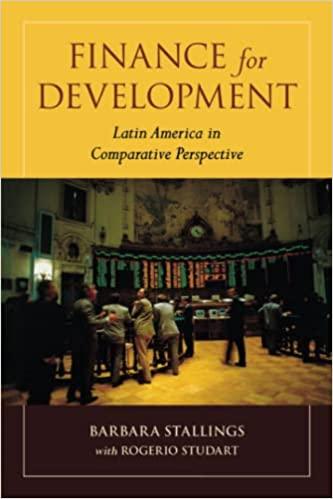Question
Mini-case 1: Interest Rates, Bond Yields, and Duration concepts in this case simple loans fixed-payment loans coupon bonds present value yield-to-maturity current yield nominal and
Mini-case 1: Interest Rates, Bond Yields, and Duration
concepts in this case
simple loans
fixed-payment loans
coupon bonds
present value
yield-to-maturity
current yield
nominal and real interest rates
rate of return
capital gain
interest-rate and reinvestment risk
duration
You have been hired to analyze the debt securities of your organization. The firm has outstanding loans and bonds. A quick review of the balance sheet shows the following:
Nominal
Interest
Liability (coupon) Years to
Amount($) Rate Maturity
Selected Liabilities of the Firm
Simple Loans 800 5% 1
Fixed-Payment Loans 5 000 12% 19
Long-term Bonds #1 500 000 10% 4
Long-term Bonds #2 1 080 000 10% 10
Liabilities Total 1 585 800
Market Price for Bond #1 930.50
Market Price for Bond #2 859.50
Face Value of Each Bond 1000.00
Selected Current Assets of the firm
Marketable Securities:
Treasury Bills 100 000
Note: Treasury Bills have a $10 000 face value, which matures in one year. Each Treasury Bill has a cost of $9,580.00
1. How much interest would the firm pay each year on the simple-interest loan?
2. How much would you write a cheque for to pay off the loan in one year?
3. What is the monthly payment needed to pay off the fixed-payment loans?
4. What is the current yield for each bond if the current price is:
a. $930.50 for Bond #1?
b. $859.50 for Bond #2?
5. What is the expected yield to maturity for each bond?
a. Bond #1 selling for $930.50?
b. Bond #2 selling for $859.50
6. What is the rate of capital gain if both bonds sell for $900 in one year?
a. Bond #1 selling for $930.50 today?
b. Bond #2 selling for $859.50 today?
7. If the Yield to Maturity expected by investors changes to 11%:
a. What will be the market price of Bond #1?
b. What will be the market price of Bond #2?
c. What will be the dollar change in price for Bond #1?
d. What will be the dollar change in price for Bond #2?
e. What will be the percent change in price for Bond #1?
f. What will be the percent change in price for Bond #2?
g. Since the change in expected yield to maturity is the same, why is the amount of change different between the bonds?
8. If investors holding our 4-year bonds (Bond #1) receive interest income annually for four years, plus the face value of the bonds at maturity,
a. What will be the total interest earned on the bond over the next four years?
b. What will be the face value received at maturity?
Given the following projected income stream for Bond #1:
Coupon Face Projected Reinvestment Rates
Year Interest ($) Value ($) 10% 5%
1 100
2 100 10.00 5.00
3 100 21.00 10.25
4 100 1000 33.10 15.76
Total
income
in year 4 400 1000 33.10 15.76
c. What is the total cash available over the next four years to the bondholder earning
i. 10%
ii. 15%
d. What is the average annual rate of return for the bondholder earning (Hint: Use the market price of 930.50)
i. 10%
ii. 15%
e. Why does the reinvestment rate affect the annual rate of return for the same bond?
f. If the expected rate of return on our bonds is 10%, what is the duration of Bond #1?
9. What is the yield to maturity on the Treasury Bills (a discount bond)?
10. What is the real rate of interest if the nominal rate is 10% and the inflation rate is 3%?
Step by Step Solution
There are 3 Steps involved in it
Step: 1

Get Instant Access to Expert-Tailored Solutions
See step-by-step solutions with expert insights and AI powered tools for academic success
Step: 2

Step: 3

Ace Your Homework with AI
Get the answers you need in no time with our AI-driven, step-by-step assistance
Get Started


